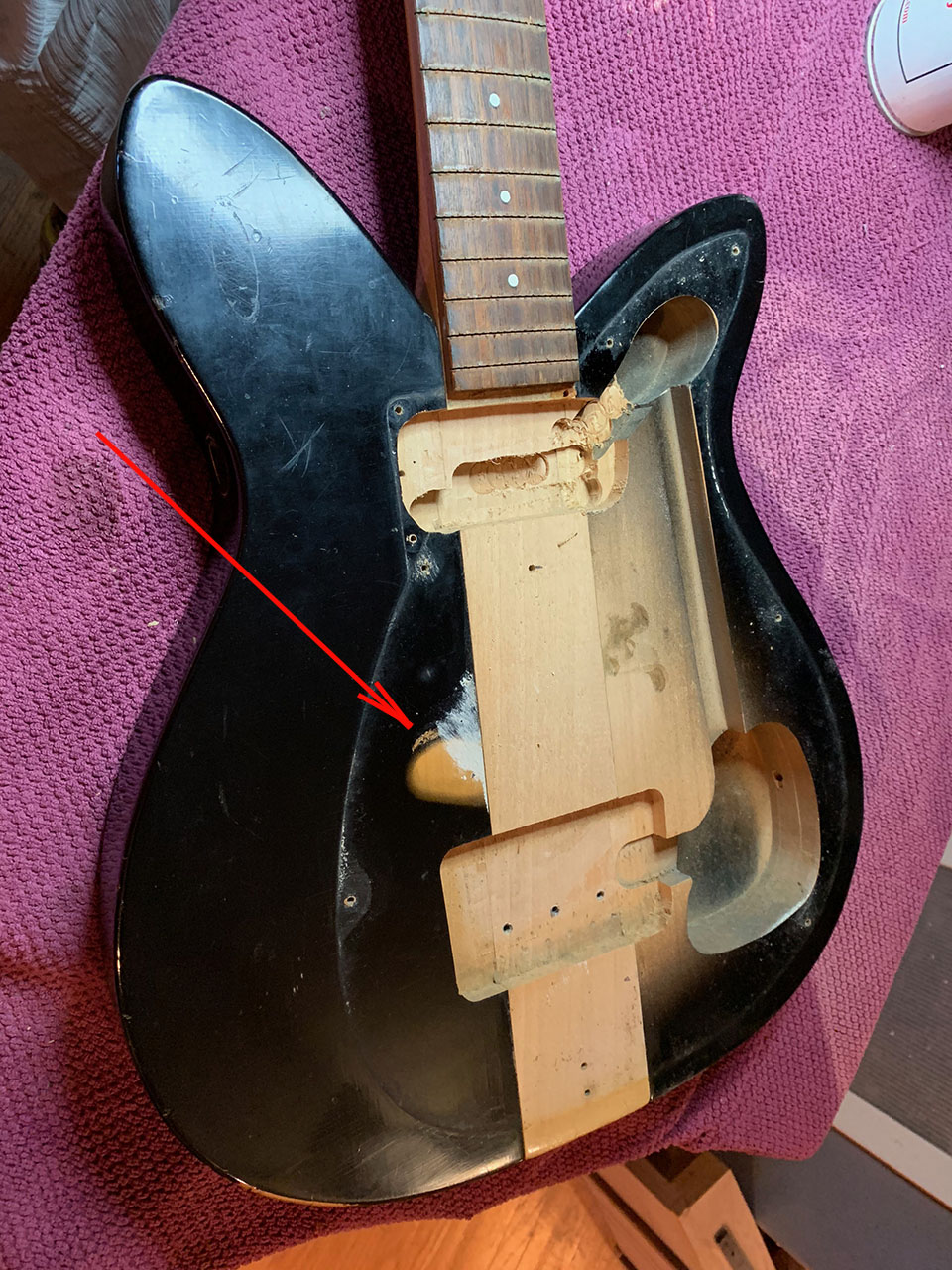ANOTHER CLOVERFIELD GREEN COMBO 400 RESTORATION
One of the VERY FIRST Rickenbacker solid-bodied guitars—the 26th made, by our reckoning! Sometime in mid-1956, this primitive beauty first saw the light of day. It was built from only four solid wood parts—the through-neck and two body “wings”, made from solid Alder, and the gorgeous Brazilian Rosewood fretboard. You’ll notice the nickel-plated plugs in the body sides, which cover the fasteners on the ends of the steel rods that hold the body “wings” to the neck. Oddly, at the factory, the body was also glued together, and was misaligned in the process. We separated the “wings” from the neck, planed all three absolutely flat, and finished them separately before gluing and bolting them back together.
A new pickguard was fabricated from .040” aluminum, gold-anodized, and matte-coated to match the original truss rod cover, which had the chipped “Rickenbacker” script touched up. The bridge cover was also one of our fabrications, as after decades, these are now unavailable on the market.
Most other original parts were kept. The Rowe-DeArmond pickup had been mounted off-center by the factory, so this was corrected. New strap pegs were fitted, as the original hung from a saxophone strap: too quirky for modern playability. Original tuners were untrasonically cleaned and re-used. The fretboard was de-fretted, flattened, re-crowned, and new frets were pressed into place and dressed. The Brazilian Rosewood was grain-filled, sealed, and given a special hard-wearing matte coat to preserve the finish and allow it to shed dirt. The neck received six coats of special urethane clear coat, and was then wet-sanded and buffed to a mirror finish.
The body “wings” were stripped and flattened, and the edge radii were cleaned up. Several coats of polyester primer-surfacer were sprayed, and after these catalyzed, they were flattened to a glass-smooth surface before receiving four coats of specially-mixed Cloverfield Green Metallic urethane paint. These were followed by six coats of urethane clear coat, which was then wet-sanded and buffed absolutely flat and shiny.
Compared to Fender student-model guitars of 1956 like the Duo-Sonic, this Rickenbacker is of very primitive construction. But sound and playability are right up there with professional-grade models, and now this restoration pushes this simple instrument into real playable “eye candy” territory.
Inspect the photos closely, and read the captions for insight into how Electro String (Rickenbacker's manufacturing arm) built solid bodies back in the middle of the last century.













